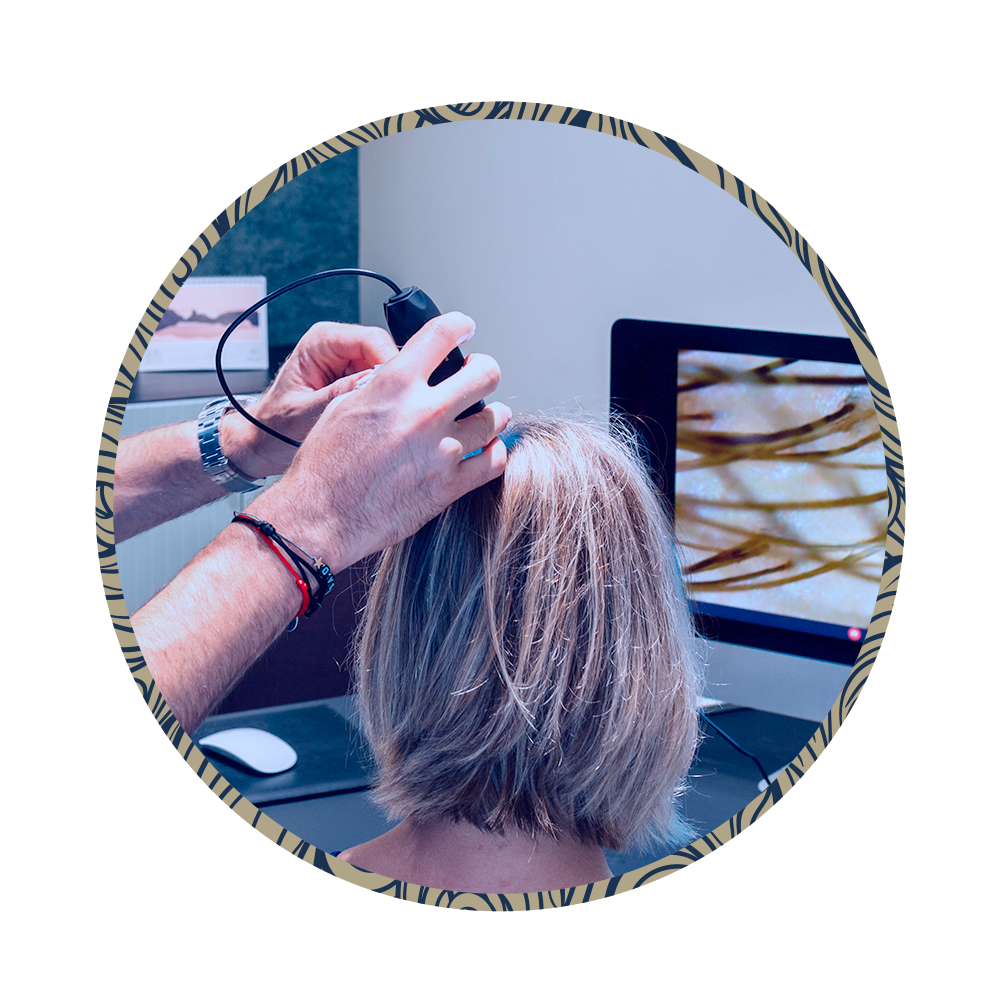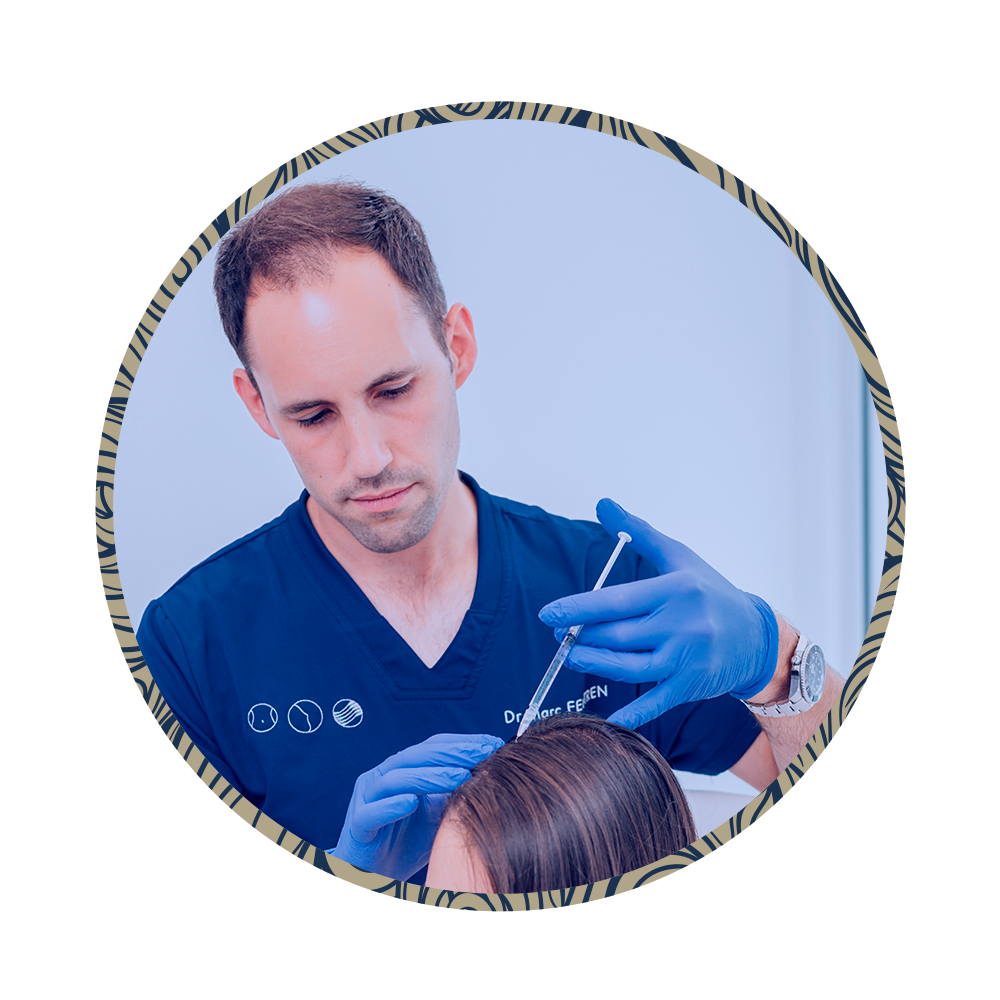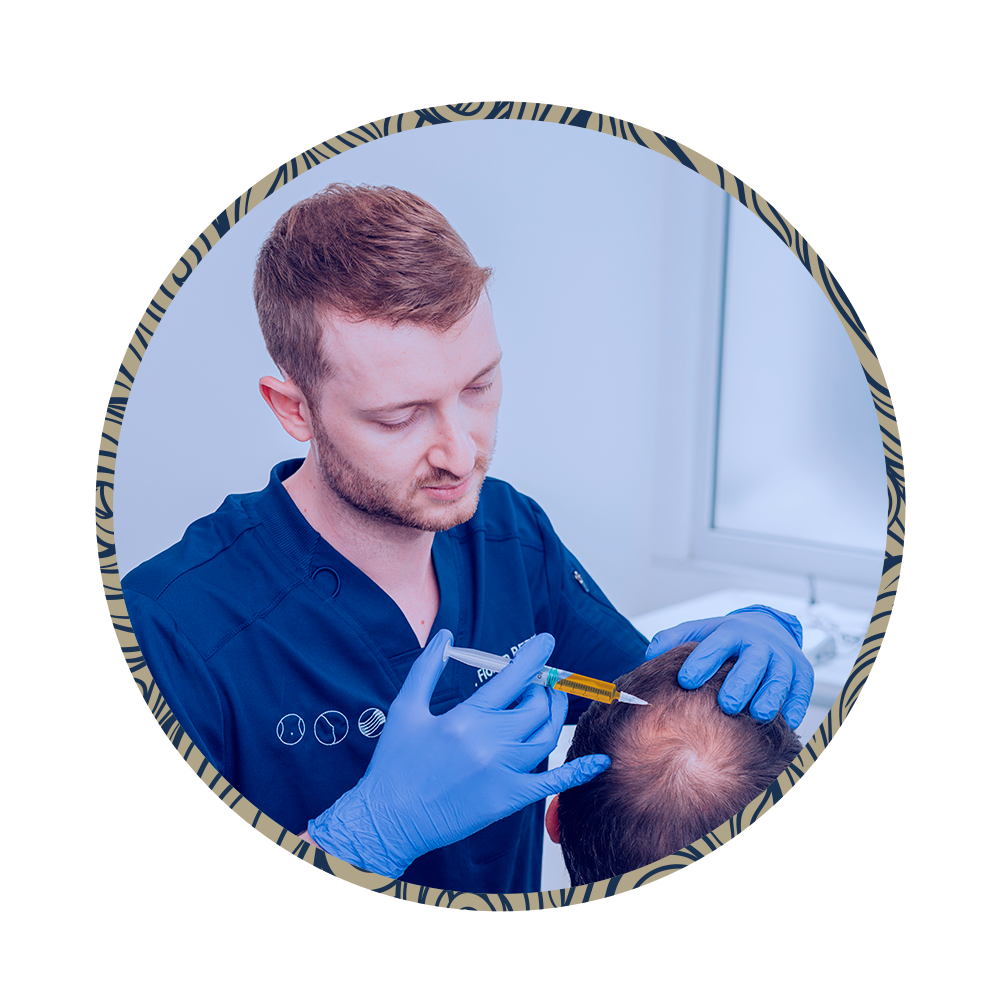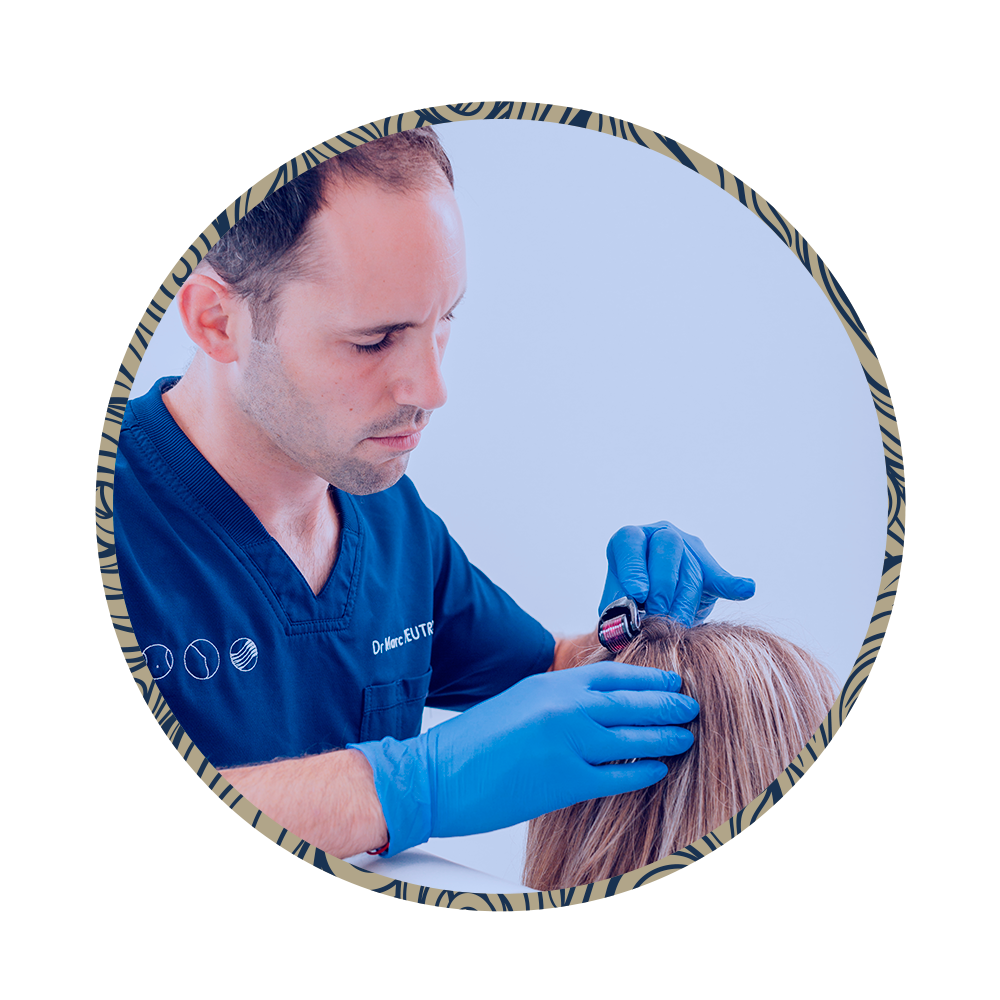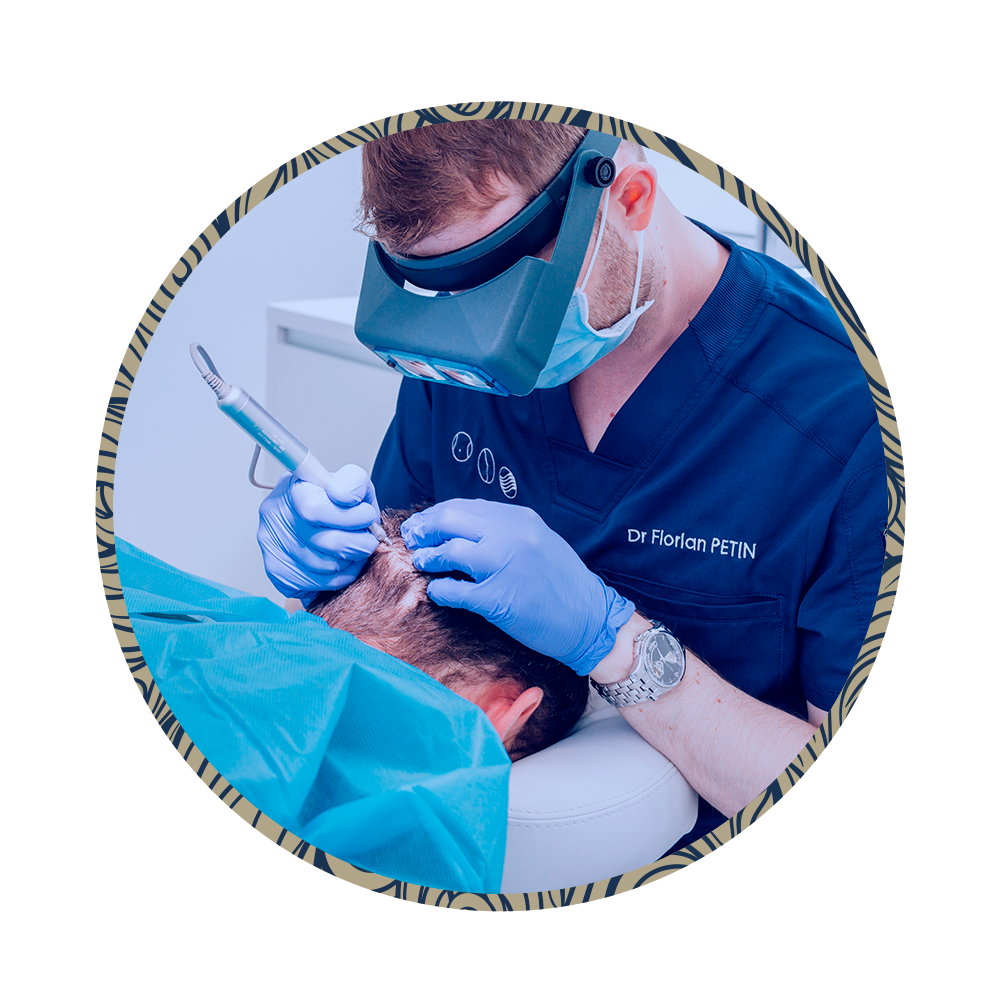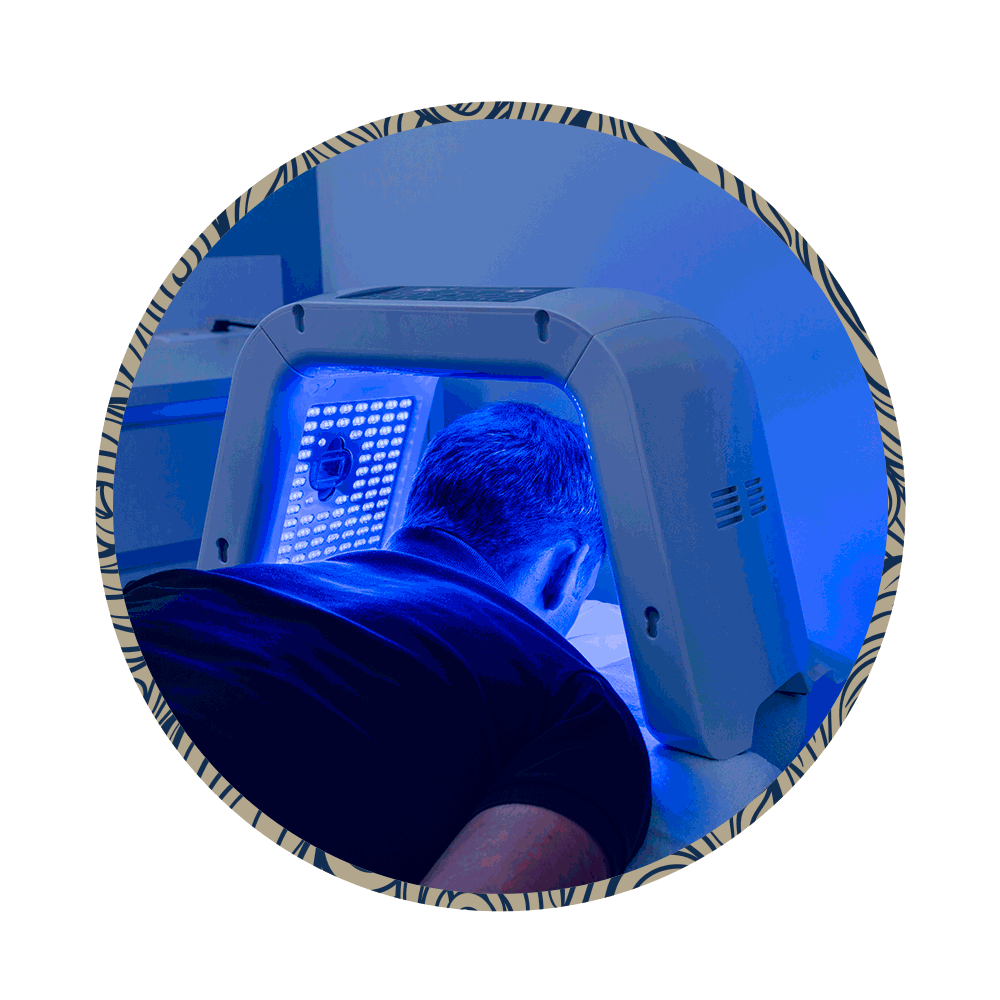What is Alopecia?
Alopecia in a few figures:
20% at age 40
30% after menopause
20% at age 20
50% at age 50
3/4 of French people are affected by hair loss at some point in their life
women are concerned with
Alopecia/ Hair loss in France
men are concerned with
Alopecia/Hair loss in France
patient choose
to have hair transplantation,
in the world.
Evolution of Androgenic Alopecia
Male pattern baldness (androgenic alopecia) corresponds to chronic and diffuse hair loss affecting mainly men (but also women after menopause).
The different stages of male pattern hair loss

In men, there is a progressive decrease in hair diameter linked to a decrease in the duration of the anagen phases.
This ultimately leads to a thinning of the hair and then to the disappearance of the hair follicle.
The characterization of baldness is attributed to the difference in susceptibility of the frontal and vertex follicles to androgens compared to those in the occipital area. This is why the donor area for hair transplants is located at the "crown" in the occipital area and extends to the temporal areas.
Depending on the stage of baldness in men, several therapeutic strategies are possible:
At all stages: FUE transplantation is possible especially if the psychological distress is significant.
Stages 1 to 5: it is important to stabilize the evolution of androgenetic baldness to optimize the results of an FUE hair transplant. Various solutions exist: LLLT, mesotherapy, microneedling, drug treatment, platelet-rich plasma (PRP) injections.
Stages 5 to 7: FUE is essential to recover an acceptable density, which will be conditioned by the hair density and the surface of the donor area combined with hair stimulating treatment.
.
The different stages of alopecia in women

In most cases, female pattern hair loss is more diffuse and leads to an overall loss of density, while not affecting the frontal area.
In women, treatment is also adapted to the stage of alopecia:
- Stages 1.1 to 3: a combination of different medical techniques (drug treatment, mesotherapy, microneedling, growth factors (PRP and LED) can limit hair loss and stimulate the growth of quality hair.
- Stages 1.1 to 2.2: FUE is possible in the earliest stages. It has its full interest in stages 1.4, 2.1 and 2.2.
- Stage 3: FUE is not possible for stage 3 baldness in women because the donor area does not allow recovery of enough grafts to fill and give sufficient density on the affected area. FUE is however possible from the earliest stages especially if the psychological distress is significant.
HAROJ offers medical treatments and FUE hair transplant to limit the effects of alopecia.




